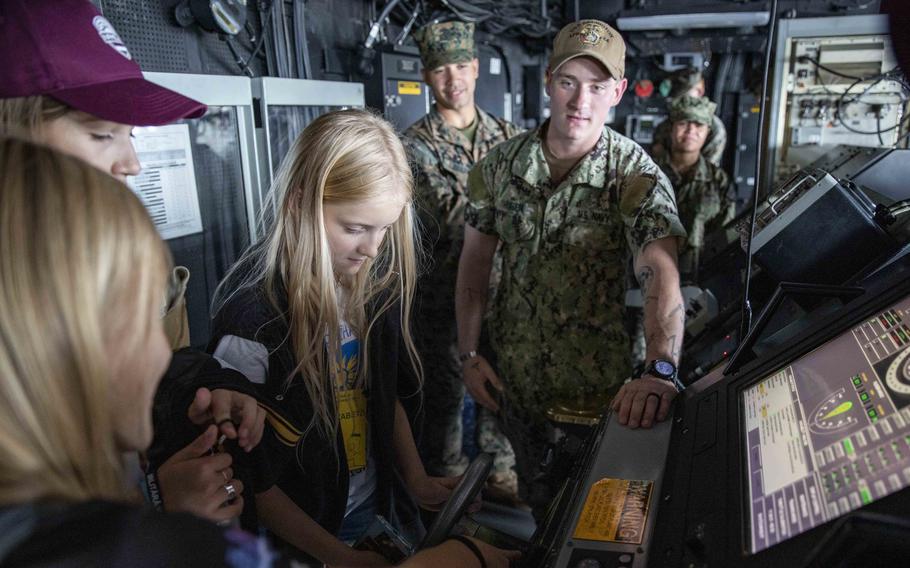
Seaman William Hube explains the steering of the amphibious transport dock ship USS Arlington to a group of Ukrainian children during a port visit in Riga, Latvia, in 2022. Sailors proficient in certain languages, including Ukrainian and Latvian, can earn a $500 bonus by qualifying under a Navy testing program outlined in an April 24 memo. (John Bellino/U.S. Navy)
Sailors proficient in Russian or any one of 13 other high-demand languages may be able to add a one-time $500 bonus to their paycheck under a new Navy testing program.
Central and Eastern Europe dominate the list, with 11 of the 14 languages chosen for the bonus program. They include Bulgarian, Czech, Estonian, Hungarian, Latvian, Lithuanian, Polish, Romanian, Russian, Slovak and Ukrainian. The three others are Hausa, Kurdish-Sorani and Thai.
Multilingual sailors can test for up to two languages in a month, which would make them eligible for a one-time $1,000 bonus.
Because the service aims to identify untapped linguistic skills, rated language professionals aren’t eligible for the extra cash. That group includes foreign area officers, cryptologic interpreters and graduates of the Defense Language Institute.
Navy personnel who are already receiving a regular monthly foreign language proficiency bonus through a language-coded assignment are also ineligible.
Skill in most of the selected languages will be assessed through Defense Language Proficiency Tests or an oral interview, which must be done no later than Sept. 30.
Assessments will be based on the Interagency Language Roundtable scale. Sailors can qualify for the bonus either by scoring a 2+ on the listening and reading portions of a proficiency test or by achieving the same score in speaking via the interview.
However, there is no proficiency test for Estonian, Latvian and Slovak, so an interview is the only option. For Lithuanian, an interview isn’t possible, leaving the proficiency test as the sole evaluation method.
The 2+ rating is generally considered to be close to the level of understanding of an educated native speaker.
These languages support current operations with partners and allies, aligning with those identified as critical by the Defense Department and the Navy, according to an administrative message issued in late April.
The ongoing impact of the Russia-Ukraine war for the U.S. and its allies is evident in the language selections. Aside from Russian and Ukrainian, all the European languages in the program are representative of NATO member countries.
Sailors can visit the MyNavy Portal to schedule a testing appointment. More information is available at languagetesting@us.navy.mil.